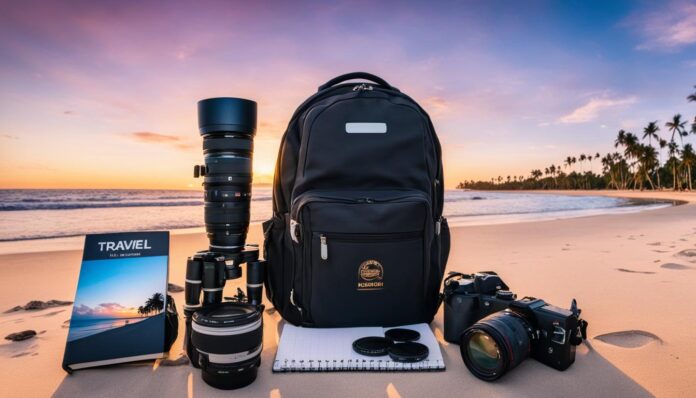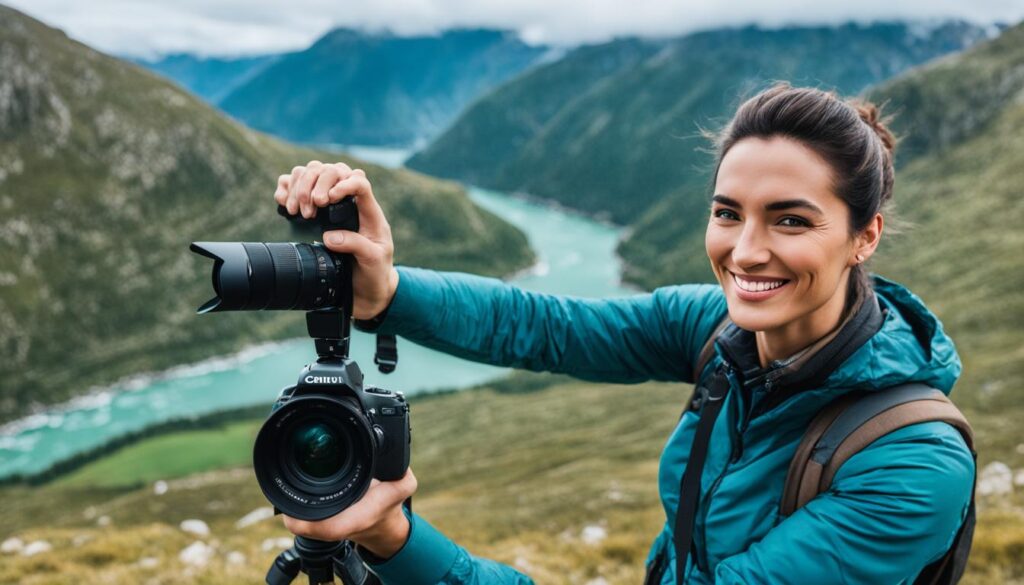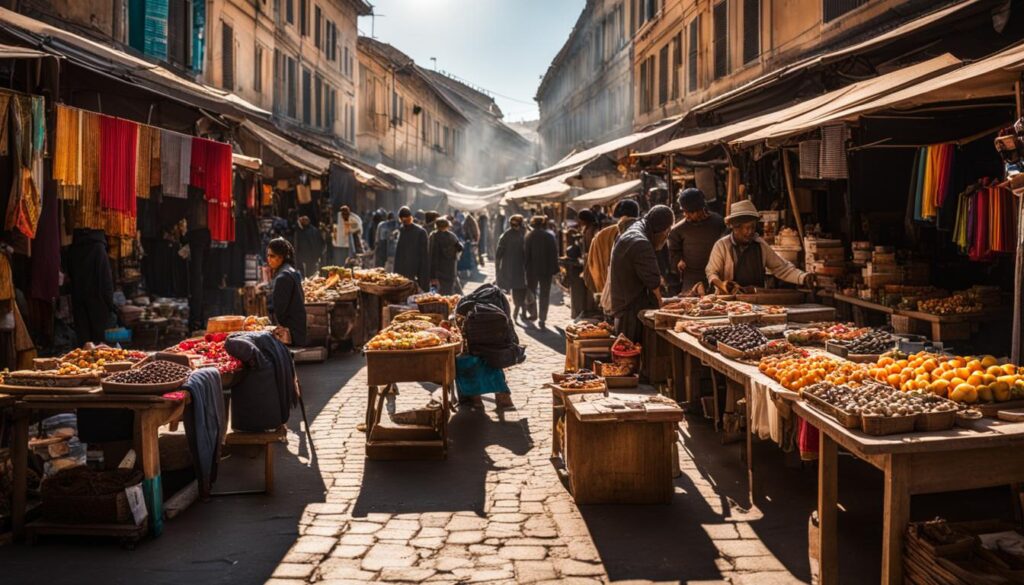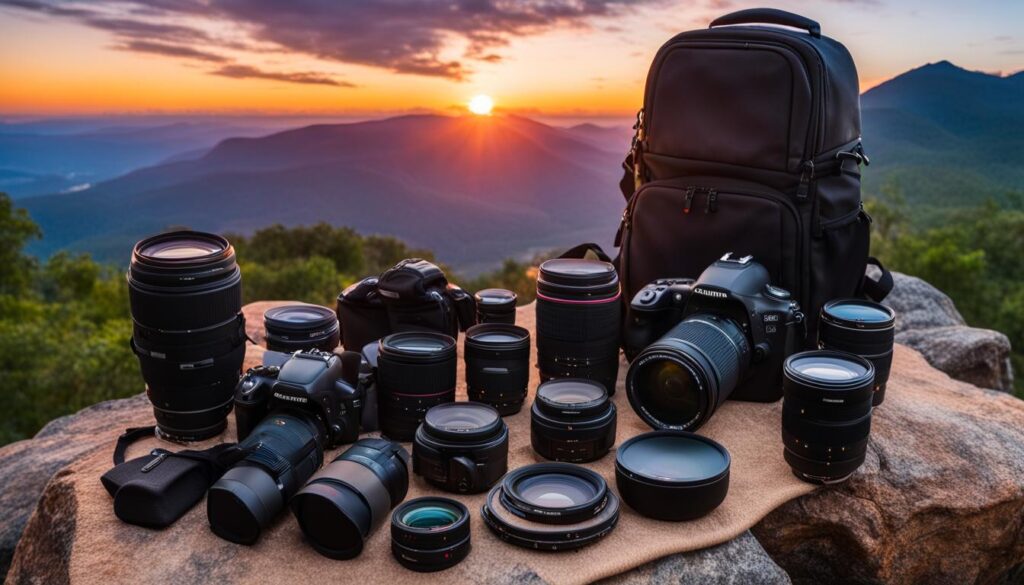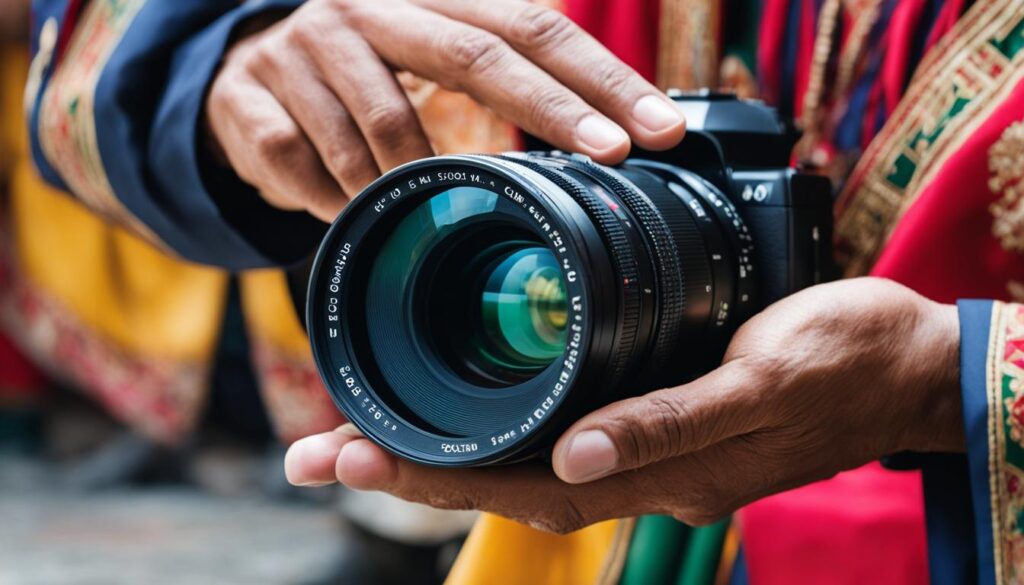If you’re new to photography or just starting to explore the world of travel photography, you’ve come to the right place. In this article, we’ll be discussing some essential travel photography tips specifically designed for beginners.
As a beginner, it can be overwhelming to know where to start, what gear to use, and how to capture stunning shots. But fear not, with our beginner’s guide to travel photography, you’ll learn everything you need to know to take your photography skills to the next level.
From understanding composition and framing to mastering lighting and choosing the right gear, we’ve got you covered. Keep reading to uncover our top travel photography tips for beginners.
Understanding Composition and Framing
Composition and framing are essential elements in travel photography. By using simple techniques, you can transform a dull photo into a visually appealing image that tells a story. As a beginner, understanding composition and framing will help you capture photos that stand out.
The rule of thirds is a fundamental concept in composition. Divide your image into a grid of nine equal parts by imagining two vertical and two horizontal lines. Place the subject of your photo on one of the intersecting points, and you’ll create a balanced and visually appealing image.
Leading lines are another powerful composition technique that draws the viewer’s eye towards the subject. Use natural lines in your environment like roads, rivers, or even buildings, to create a sense of depth and guide the viewer’s attention.
“The picture is a self-sufficient entity that will explain itself without a caption.” – Steve McCurry
Consider the framing of your photo as well. Look for opportunities to add foreground or background elements that complement the subject and create additional depth. And don’t be afraid to experiment with different angles and perspectives to find the best framing for your shot.
Finally, remember that composition and framing work hand in hand with your camera settings. When choosing your camera’s aperture, opt for a wide aperture (small f-number) to create a shallow depth of field and blur the background. A narrow aperture (large f-number) will keep everything in focus, which is ideal for sweeping landscapes or group portraits.
By understanding composition and framing, you can create visually appealing photos that capture the essence of your travels. So always remember to think about the rule of thirds, leading lines, and framing before clicking the shutter button.
Mastering Lighting in Travel Photography
One of the main elements that can enhance or ruin your travel photos is lighting. Knowing how to use light effectively can make a massive difference in capturing stunning images.
When you’re traveling, you may encounter different lighting conditions, such as bright sunlight, overcast skies, or low light situations. Understanding how to make the most of these conditions is essential.
The golden hours of sunrise and sunset are the ideal time to capture beautiful silhouettes and warm, soft light. During these hours, the sun is lower in the sky, creating longer shadows and deep contrasts.
However, if you have to shoot during the middle of the day, when the sun is high in the sky, try to avoid harsh shadows and overexposure of your images. Use a polarizing filter to reduce glare and increase the saturation of colors. These filters help reduce reflections from non-metallic surfaces such as water, glass, or leaves.
Another way to master lighting in travel photography is by using natural light creatively. For example, place your subject in front of a window to capture a beautiful portrait or use the light source coming from behind to create a dramatic effect.
Remember, the key is to experiment with different lighting scenarios and angles to see how it affects your images.
Choosing the Right Gear for Travel Photography
As a beginner travel photographer, choosing the right gear can be overwhelming. To capture stunning travel photos, you’ll need to pack essential equipment that is both versatile and light.
First, consider investing in a camera that offers high megapixels, fast shutter speed, and excellent image stabilization. This will be the foundation of your photography gear.
Next, choose lenses that suit your photography preferences. Wide-angle lenses are great for capturing landscapes and cityscapes, while zoom lenses provide versatility for capturing different perspectives.
A tripod can also come in handy for long exposures and minimizing camera shake. Additionally, consider packing filters such as polarizing and neutral density filters, which can enhance your images in bright sunlight or low-light conditions.
Here’s a quick checklist of essential gear for beginner travel photographers:
| Camera | A high-megapixel camera with fast shutter speed and image stabilization |
|---|---|
| Lenses | Wide-angle lens, zoom lens |
| Tripod | To minimize camera shake and vibrations |
| Filters | Polarizing, neutral density filters |
Remember, the gear you choose should be tailored to your photography style and travel needs. Don’t forget to pack extra batteries, memory cards, and a camera bag for storage and protection.
Planning and Researching Locations
Travel photography is all about capturing stunning and unique shots during your adventures. To do this, it’s essential to plan and research your locations beforehand to maximize your photo opportunities.
Start by researching the top photography spots in your chosen destination. Look for unique perspectives and hidden gems that might not be well-known to tourist crowds. Try to talk to locals and other photographers to get insider information on the best places to shoot.
It’s also crucial to understand the local customs and culture of the areas you plan to visit. This knowledge will help you capture the true essence of the place you’re photographing while also ensuring you’re respectful of the local community.
| Tip | Description |
|---|---|
| Research permits | Some locations, such as national parks or historical sites, may require permits before you can take photographs. Make sure to research and obtain any necessary permits well in advance of your trip. |
| Scout locations | Once you’ve determined your locations, scout them out ahead of time if possible. This will help you find the best perspectives and lighting scenarios and save you time during your shoot. |
| Dress appropriately | Be sure to check the weather and dress accordingly for your shoot. You may also need to dress respectfully according to local customs or religious sites. |
Overall, taking the time to plan and research your locations pays off in the form of stunning and unique photographs. Happy shooting!
Capturing People and Cultures
Travel photography is not just about capturing beautiful landscapes; it also involves documenting the essence of different cultures and the people that make up those cultures. To get started with this type of photography, you need to learn the technical skills and equipment required, as well as how to approach people respectfully. Here are some beginner-friendly travel photography techniques to help you capture stunning images of people and cultures:
1. Interact With the Locals
One of the best ways to capture the essence of a culture is by interacting with locals. Strike up a conversation with them and get to know their culture. This will give you a unique perspective and understanding of the culture you’re trying to capture. Always remember to be respectful and ask for permission before taking their photo.
2. Focus on the Eyes
The eyes are the windows to the soul, and this is particularly true in portrait photography. When taking photos of people, make sure their eyes are in focus. Use a wide aperture to create a shallow depth of field, which will blur the background and make the subject stand out.
3. Tell a Story
Photographs are a visual medium that can tell a compelling story. When taking photos of people, focus on capturing their emotions and telling their story through the image. This will create more impactful and meaningful photographs.
4. Use Context to Your Advantage
Capturing people and cultures is not just about the subject itself. The environment and context in which the subject is situated can also add depth and meaning to a photograph. Include relevant background details such as architecture, clothing, and traditions to give the image added context.
By following these tips and techniques, you’ll be able to capture the essence of people and cultures in your travel photography. Each culture has its quirks and charms, so embrace them, and use them to your advantage to tell stories that will touch and inspire your viewers.
Editing and Enhancing Your Travel Photos
Congratulations! You’ve just captured some stunning photos on your travels. Now, it’s time to enhance them to make them truly stand out. Editing is a crucial part of the travel photography process, and it’s essential to know the right techniques to use in order to get breathtaking results.
If you’re just starting with editing, the most popular software like Adobe Lightroom, or Photoshop, will get you off on the right foot. Here are some top travel photography tips beginner photographers should consider:
- Adjust Exposure: Make your photos brighter or darker as desired. Correct under or overexposed photos to display your travel memories in their best light.
- Fix Color: Color issues are a common challenge to tackle. Adjust color temperature, contrast, and saturation to enhance the natural beauty in your photos.
- Remove Distractions: Eliminate irrelevant objects from your images by cropping, or using the clone stamp tool. Clean up distracting elements in your image so that the main subject remains the focus.
Your goal with editing is to create a photo that resembles the image you had in your mind when you took it. Keep in mind not to over-process the images and to stay true to the moment you captured.
Now, let’s have a look at a quick comparison that illustrates the importance of editing. The first image is taken straight from your camera, while the second image is edited to fix the exposure and boost color:
| Without Editing | With Editing |
|---|---|
By using beginner-friendly editing techniques, you can turn a bland photo into a dynamic image that truly captures the magic of your travel experiences. Spend some time practicing and perfecting your editing skills, and you will be amazed at how stunning your photos can look.
Overcoming Common Travel Photography Challenges
As a beginner travel photographer, you may encounter common challenges that hinder your ability to capture stunning images. In this section, we’ll discuss some essential travel photography tips that will help you overcome these obstacles and improve your skills.
Dealing with Crowded Tourist Spots
When you’re traveling to popular tourist destinations, you may find that these places can get overcrowded, making it difficult to capture the perfect shot. One way to address this challenge is to visit these spots early in the morning or during off-peak hours. This way, you’ll have the opportunity to capture the location in a more peaceful and less crowded setting. Alternatively, you can try to shoot from above using a drone or find unique angles that will allow you to isolate your subject from the crowd.
Managing Unpredictable Weather Conditions
Weather conditions can significantly impact the outcome of your travel photos. To manage unpredictable weather, you can prepare beforehand by researching the weather forecast for your travel destination and packing the necessary equipment such as waterproof gear and lens cloths. Another way to capture stunning images despite poor weather conditions is to embrace the weather and use it to your advantage. For example, you can capture moody and dramatic shots during rainy weather or use the clouds to create an interesting backdrop.
Working with Limited Time
Traveling often means working with a limited amount of time to capture everything you want to see. To overcome this challenge, it’s important to plan ahead and make a list of the shots you want to take. Prioritizing the must-see spots and ensuring you have enough time to visit them will help you capture unforgettable moments. Additionally, you can use bursts or continuous shooting modes on your camera to increase your chances of capturing the perfect shot.
By following these essential travel photography tips, you’ll be better equipped to overcome common challenges and capture breathtaking images during your travels. Remember to remain patient, flexible, and creative to make the most of your travel photography journey as a beginner.
Preserving and Sharing Your Travel Photos
After capturing stunning images on your travels, it’s important to preserve your memories and share your experiences with others. Here are some beginner-friendly travel photography techniques to keep in mind:
Protecting Your Images
To ensure your travel photos are safe and secure, consider backing them up in multiple locations. You can save them to an external hard drive, upload them to cloud storage services like Google Drive or Dropbox, or use a dedicated backup service like Backblaze.
Additionally, you can protect your images by adding watermarks or copyright information before sharing them on social media or other platforms.
Creating Photo Books and Albums
One of the most rewarding ways to preserve your travel memories is by creating physical photo books or albums. You can use online services like Shutterfly or Mixbook to design and order your own custom books or albums that feature your favorite travel photos.
Alternatively, you can create your own DIY albums by printing out your images and arranging them in scrapbooks or photo albums.
Showcasing Your Work
Sharing your travel photos on social media platforms like Instagram, Facebook, or Twitter is an excellent way to reach a wider audience and get your work noticed. You can also create your own website or online portfolio to showcase your best images and build your own brand as a travel photographer.
Remember to always attribute your work properly and respect the intellectual property rights of others when sharing your images online.
Conclusion
Now that you have reached the end of this beginner-friendly guide to travel photography, you have the knowledge and tools to capture stunning photos on your adventures. Remember to always consider composition and framing, take advantage of different lighting conditions, choose the right gear, research and plan your locations, capture the essence of different cultures, and overcome common challenges.
Don’t forget to edit and enhance your images using popular software, preserve your photos through various means, and share your work with others. By practicing and experimenting, you can continually improve your skills and develop your unique perspective.
So go out and explore the world through your lens! Your next perfect shot is waiting for you.




























